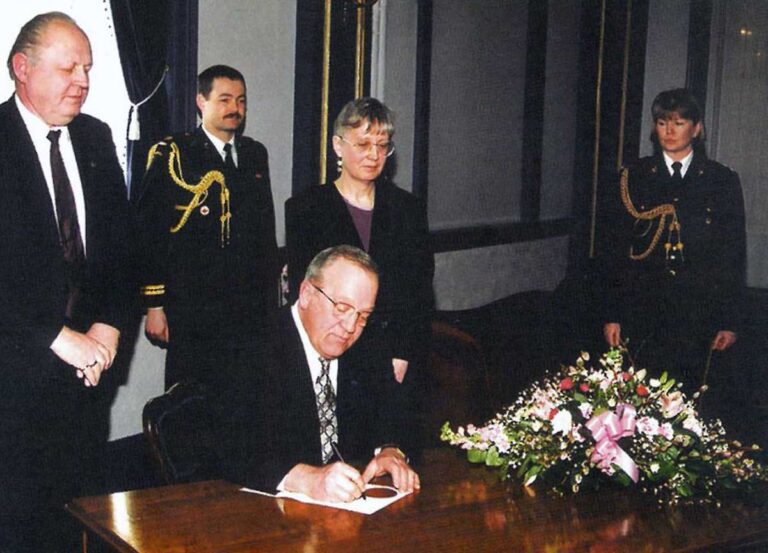- Home
- News Archive
- 25 Years of Regulating Geoscientists
News Archive
25 Years of Regulating Geoscientists
March 8th, 2022
The article below is taken from Issue 167 of The Professional Edge for March/April 2017 about the formation of APEGS and 25 years of regulating geoscientists.
Celebrating the formation of APEGS
March 7, 1997 was a landmark date in the evolution of the professions in Saskatchewan. That was the day that APES became APEGS as geoscientists were welcomed into the association under the newly-proclaimed The Engineering and Geoscience Professions Act.
Before that time, geoscientists were represented by a collection of more informal voluntary organizations such as the Saskatchewan Geological Society (SGS), or by registration as a professional engineer under the previous legislation. The coming together of the two professions came about as part of a growing trend in Canada and around the world to bring accountable self-regulation to geoscience.
Back in the 1990s, former APEGS Executive Director and Registrar Dennis Paddock, P.Eng., FEC, FCSSE, FCAE, FGC (Hon.) was a volunteer who helped co-ordinate the merger talks.
“Although the Bre-X scandal didn’t happen until the merger was complete, there had been a number of smaller scandals in other places that caused governments to become concerned about exploration speculation. Consequently, we got signals behind the scenes from our partners in government that they wanted to see something happen to avoid something happening here,” Paddock says.
Saskatchewan was not the first to take this step. Alberta and B.C. had already brought geoscientists into their engineering associations and other provinces were lined up not far behind. Fran Haidl, P.Geo., FEC (Hon.), FGC, who co-chaired negotiations from the geoscience side notes that this was a key motivation for her peers at the time.
“It was clear that professional registration would soon be necessary for interprovincial mobility. But that wasn’t the only reason. It was obvious that this was a step that was needed to protect the public and that it just didn’t make sense to have two separate organizations,” she said.
Haidl notes that perhaps the greatest challenge in transitioning from a voluntary to a formal association was maintaining communication. To facilitate communication, the SGS/CIM Professional Registration Committee, composed of geoscientists from industry, government and both universities, was formed in 1989.
Both Paddock and Haidl recall that the talks proceeded smoothly with only a few small points of contention that were easily resolved. The harmonious atmosphere of the discussions was further proof that the two professions were meant to be together.
That harmonious partnership has played out in the decades since, Paddock said.
“I think that, at first, some geoscientists might have been concerned that they would be overwhelmed and have little voice in the new association. On the contrary, geoscientists have proven to be important voices in the development of APEGS. They have held many posts on the executive and have been active members of many boards and committees,” he says.
March 7, 1997
Honourable John E.N. Wiebe, Lieutenant Governor of Saskatchewan, signs the proclamation of The Engineering and Geoscience Professions Act.

Heinrich Feldkamp, P.Eng., FEC (APES President 1996 – 1997)
Frances Haidl, P.Geo., FEC (Hon.), FGC (Act Amendment Committee)
John E.N. Wiebe (seated)